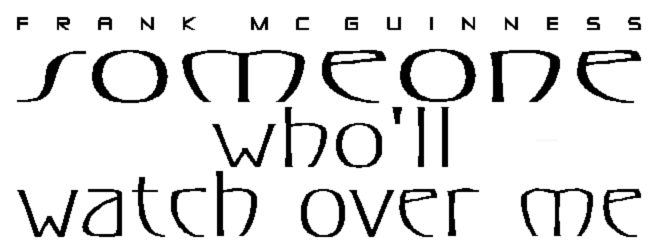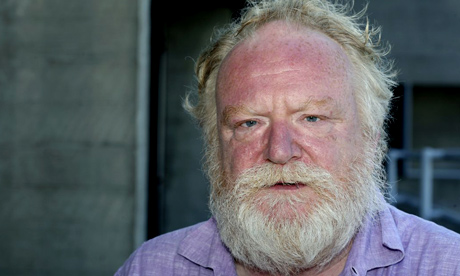proudly presents
the 2000 production of

The Players (in order of appearance)
| Newscaster ...................................... | Max Fiederer |
| Edward Sheridan, an Irishman .... | Stefan kai Spörlein |
| Adam Canning, an American ........ | Jörg Weese |
| Michael Watters, an Englishman .. | Stefan Knop |
| vocals ................................................ | Barbara Sametinger |
| piano .................................................. | Christian Roedel |
The Experts
| Language coaching ...................... | Kenneth Wynne |
| Director's assistants .................... | Bettina Beuer, |
| Roman Christa | |
| Stage technician ........................... | Markus Göppner |
| Stage construction ....................... | Thomas Assländer |
| Lighting and sound ...................... | Frank Gundermann, Heike Polster |
| Stage design .................................. | Roman Christa, Heike Polster |
| Props / Costumes ......................... | E.T.A.-Hoffmann-Theater, the Cast |
| Graphic design .............................. | Stefan kai Spörlein, |
| PR ..................................................... | Stefan kai Spörlein, Heike Polster, |
| Cornelia Daig-Kastura | |
| Photographs .................................. | Heike Polster, |
| Stefan kai Spörlein |
Directed by Heike Polster
The Author
 Frank McGuinness was born in Buncrana, County Donegal, in 1953. He studied at the University College, Dublin (UCD), receiving BA and M.Phil in medieval studies. Frank McGuinness was born in Buncrana, County Donegal, in 1953. He studied at the University College, Dublin (UCD), receiving BA and M.Phil in medieval studies. He began writing poetry in 1974, and from 1977 until 1979 taught linguistics and drama at the University of Ulster, Corelaine, Northern Ireland. He lectured in Old and Middle English at the University College, Dublin, 1979-1980. He subsequently lectured English at St. Patrick’s College Maynooth which he does to this day. In 1997 he returned to UCD a s a lecturer. His academic interests in literature, linguistics and Old and Middle English naturally influence his drama, as does almost everything else. History, politics and popular culture create a rich mixture and allow various readings. Contemporary Ireland, of course, remains the main focus. This is even true for Someone Who’ll Watch Over Me (1992), which is set in a cell in Lebanon. McGuinness first major success as a playwright was the 1982 production of Factory Girls, a play about four women in a Donegal shirt factory who decide to take up industrial action. McGuinness has been awarded the "London Evening Standard's Most Promising Playwright Award" in 1985 for Observe the Sons of Ulster Marching Towards the Somme; "Harvey's Award"; the "Ewart-Bigg's Peace Prize", the "Irish-American Literary Prize" in 1992; a "Fringe First Award"; and an "Antoinette Perry Award" nomination for Best Play for 1993 for Someone Who'll Watch Over Me. |
The Play
When the lights go up we see two characters in a cell somewhere in the Middle East. Both have been kidnapped in Beirut by a group of Shiite Muslims, Adam the American four months ago, Edward the Irishman two months ago. Their main worry seems to be how to pass their time, but soon it becomes clear that they live in constant fear for their lives. Later on, they are joined by a third hostage: Michael, an English university teacher. He was kidnapped shortly after his arrival in Beirut. Eager to get into contact with people, he had planned to give a dinner party. Rather naively, he had been walking through the war torn city to buy pears for dessert and so became an easy target. Now they have to live up to their white lies, prejudices and shadows from the past. Three educated men, a journalist, a psychologist and a university lecturer with no one else apart from themselves to talk to have to confront the silence of captivity by reinventing communication as a means of survival. Yet, chained to a wall, all they can sometimes do is rattle the shackles… History. |
The play is based on the true story of Brian Keenan from Northern Ireland, who was kidnapped in 1986 shortly after taking up his position as a lecturer of English at the American University in Beirut.He was released in 1990 after talks between the Irish and the Iranian governments. Most of the four years he spent with John McCarthy, a British journalist, and various other American hostages. The two men became close friends. When Brian Keenan was released, John McCarthy had to wait over a year until he was finally set free after five years in captivity. Thanx!
|






